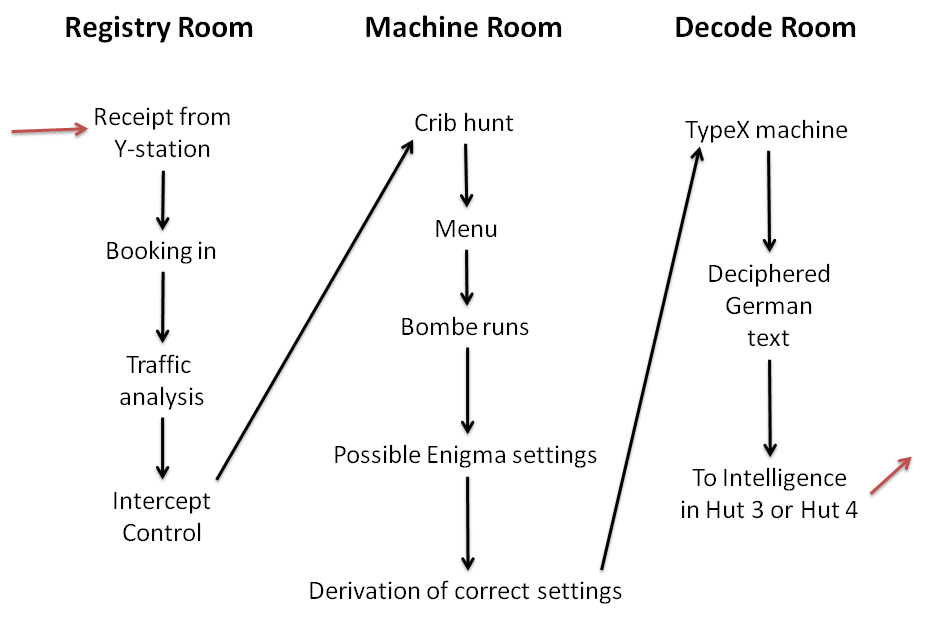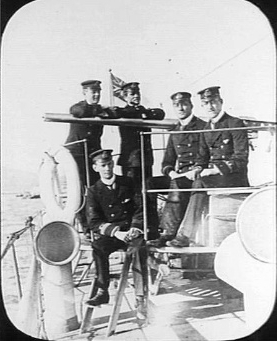|
Operation Claymore
Operation Claymore was a British/Norwegian commando raid on the Lofoten Islands of northern Norway during the Second World War. The Lofoten Islands were an important centre for the production of fish oil and glycerine, used in the German war economy. The landings were carried out on 4 March 1941, by 500 men of No. 3 Commando, No. 4 Commando, and a Royal Engineers section, and 52 men from Norwegian Independent Company 1. Supported by the 6th Destroyer Flotilla and two troop transports of the Royal Navy, the force landed almost unopposed. The original plan was to avoid contact with German forces and inflict the maximum of damage to German-controlled industry. They achieved their objective of destroying fish oil factories and some of oil and glycerine. The force returned with some 228 German prisoners, 314 Norwegian recruits, and a number of Quisling regime collaborators. Through naval gunfire and demolition parties, 18,000 tons of shipping were sunk. Perhaps the most signific ... [...More Info...] [...Related Items...] OR: [Wikipedia] [Google] [Baidu] |
Bletchley Park
Bletchley Park is an English country house and Bletchley Park estate, estate in Bletchley, Milton Keynes (Buckinghamshire), that became the principal centre of Allies of World War II, Allied World War II cryptography, code-breaking during the Second World War. During World War II, the estate housed the Government Code and Cypher School (GC&CS), which regularly penetrated the secret communications of the Axis Powers most importantly the German Enigma machine, Enigma and Lorenz cipher, Lorenz ciphers. The GC&CS team of codebreakers included John Tiltman, Dilwyn Knox, Alan Turing, Harry Golombek, Gordon Welchman, Conel Hugh O'Donel Alexander, Hugh Alexander, Donald Michie, W. T. Tutte, Bill Tutte and Stuart Milner-Barry. The team at Bletchley Park devised automatic machinery to help with decryption, culminating in the development of Colossus computer, Colossus, the world's first programmable digital electronic computer. Codebreaking operations at Bletchley Park ended in 1946 and al ... [...More Info...] [...Related Items...] OR: [Wikipedia] [Google] [Baidu] |
Roger Keyes
Admiral of the Fleet Roger John Brownlow Keyes, 1st Baron Keyes, (4 October 1872 – 26 December 1945) was a British naval officer. As a junior officer he served in a corvette operating from Zanzibar on slavery suppression missions. Early in the Boxer Rebellion, he led a mission to capture a flotilla of four Chinese destroyers moored to a wharf on the Peiho River. He was one of the first men to climb over the Peking walls, to break through to the besieged diplomatic legations and to free them. During the First World War Keyes was heavily involved in the organisation of the Dardanelles Campaign. Keyes took charge in an operation when six trawlers and a cruiser attempted to clear the Kephez minefield. The operation was a failure, as the Turkish mobile artillery pieces bombarded Keyes's minesweeping squadron. He went on to be Director of Plans at the Admiralty and then took command of the Dover Patrol: he altered tactics and the Dover Patrol sank five U-boats in the fir ... [...More Info...] [...Related Items...] OR: [Wikipedia] [Google] [Baidu] |
Combined Operations Headquarters
Combined Operations Headquarters was a department of the British War Office set up during Second World War to harass the Germans on the European continent by means of raids carried out by use of combined naval and army forces. History The command used air and naval units to deliver the Commandos to various targets, and then recover them. Thus, it was a combined arms coordination and command structure. Admiral of the Fleet Roger Keyes was the first director, from 17 July 1940 to 27 October 1941. He was replaced first by Lord Louis Mountbatten, who led the command for a year. He in turn was succeeded by Major General Robert Laycock (October 1943 – 1947). It comprised background staff whose job was to plan operations and to develop ideas and equipment to harass the enemy in any way possible. It also covered all those who worked with landing craft up to and including the landing ships that were used in the various amphibious operations. The badge of Combined Operations wa ... [...More Info...] [...Related Items...] OR: [Wikipedia] [Google] [Baidu] |
Operation Collar (commando Raid)
Operation Collar was the Code word (communication), codeword for the first British Commandos, commando raid conducted by the British forces during the Second World War. The location selected for the raid was the Pas-de-Calais Departments of France, department on the French coast. The British Commandos had not long been formed and were not yet trained and the operation was given to No. 11 Independent Company under the command of Major (rank), Major Ronnie Tod. The raid's objective was the reconnaissance of four locations and the capture of prisoners. Over the night of 24/25 June 1940, 115 men of No. 11 Independent Company carried out the operation but they failed to gather any intelligence or damage German equipment; their only success was in killing two German sentries.Haskew (2007), pp. 47–48 Background After the British Expeditionary Force (World War II), British Expeditionary Force had been evacuated from Operation Dynamo, Dunkirk in 1940, Prime Minister of the United Ki ... [...More Info...] [...Related Items...] OR: [Wikipedia] [Google] [Baidu] |
Chief Of The Imperial General Staff
Chief of the General Staff (CGS) has been the title of the professional head of the British Army since 1964. The CGS is a member of both the Chiefs of Staff Committee and the Army Board; he is also the Chair of the Executive Committee of the Army Board. Prior to 1964, the title was Chief of the Imperial General Staff (CIGS). Since 1959, the post has been immediately subordinate to the Chief of the Defence Staff (United Kingdom), Chief of the Defence Staff, the post held by the professional head of the British Armed Forces. The current Chief of the General Staff is General Roland Walker, Sir Roland Walker, who succeeded General Patrick Sanders (British Army officer), Sir Patrick Sanders in the role on 15 June 2024. Responsibilities The Chief of the General Staff (CGS) is the professional head of the Army, with responsibility for developing and generating military capability from an integrated Army (Regular and Reserve) and for maintaining the fighting effectiveness, efficiency ... [...More Info...] [...Related Items...] OR: [Wikipedia] [Google] [Baidu] |
John Dill
Field Marshal Sir John Greer Dill, (25 December 1881 – 4 November 1944) was a senior British Army officer with service in both the First World War and the Second World War. From May 1940 to December 1941 he was the Chief of the Imperial General Staff, the professional head of the British Army, and subsequently served in Washington, D.C., as Chief of the British Joint Staff Mission and then Senior British Representative on the Combined Chiefs of Staff. Early life Born in Lurgan, County Armagh, then part of Ireland, on 25 December 1881, John Greer Dill's father, also named John, (and who died when the younger John was just twelve years old) was the local bank manager and his mother, Jane, (who died just months after her husband) was a Greer from Woodville, Lurgan. With the death of both parents, "John and his sister were then cared for by an uncle, the Reverend Joseph Grundy Burton". Always intended for a career in the armed forces, Dill, along with his sister, Nicolina Franc ... [...More Info...] [...Related Items...] OR: [Wikipedia] [Google] [Baidu] |
Dudley Clarke
Brigadier Dudley Wrangel Clarke, ( – ) was an officer in the British Army, known as a pioneer of military deception operations during the Second World War. His ideas for combining fictional orders of battle, visual deception and double agents helped define Allied deception strategy during the war, for which he has been referred to as "the greatest British deceiver of WW2". Clarke was also instrumental in the founding of three famous military units, namely the British Commandos, the Special Air Service, and the naming of the US Rangers. Born in Johannesburg and brought up near London, Clarke joined the Royal Artillery as an officer in 1916 but transferred to the Royal Flying Corps after finding he was too young to fight in France. He spent the First World War learning to fly, first in Reading and then Egypt. Clarke returned to the Royal Artillery in 1919 and had a varied career doing intelligence work in the Middle East. In 1936 he was posted to Palestine, where he ... [...More Info...] [...Related Items...] OR: [Wikipedia] [Google] [Baidu] |
Dunkirk Evacuation
The Dunkirk evacuation, codenamed Operation Dynamo and also known as the Miracle of Dunkirk, or just Dunkirk, was the evacuation of more than 338,000 Allied soldiers during the Second World War from the beaches and harbour of Dunkirk, in the north of France, between 26 May and 4 June 1940. The operation commenced after large numbers of Belgian, British, and French troops were cut off and surrounded by German troops during the six-week Battle of France. After Germany invaded Poland in September 1939, France and the British Empire declared war on Germany and imposed an economic blockade. The British Expeditionary Force (BEF) was sent to help defend France. After the Phoney War of October 1939 to April 1940, Germany invaded Belgium, the Netherlands, and France on 10 May 1940. Three panzer corps attacked through the Ardennes and drove northwest to the English Channel. By 21 May, German forces had trapped the BEF, the remains of the Belgian forces, and three French field ar ... [...More Info...] [...Related Items...] OR: [Wikipedia] [Google] [Baidu] |
British Expeditionary Force (World War II)
The British Expeditionary Force (BEF) was the contingent of the British Army sent to French Third Republic, France in 1939 after Britain and France declared war on Nazi Germany on 3 September, beginning the Second World War. The BEF existed from 2 September 1939 when the BEF GHQ was formed until 31 May 1940, when GHQ closed down and its troops reverted to the command of Home Forces. During the 1930s, the British government had planned to deter war by abolishing the Ten Year Rule and rearming from the very low level of readiness of the early 1930s. The bulk of the extra money went to the Royal Navy and the Royal Air Force but plans were made to re-equip a small number of Army and Territorial Army (United Kingdom), Territorial Army divisions for service overseas. General (United Kingdom), General Lord Gort was appointed to the command of the BEF on 3 September 1939 and the BEF began moving to France on 4 September 1939. The BEF assembled along the Belgian–French border. The B ... [...More Info...] [...Related Items...] OR: [Wikipedia] [Google] [Baidu] |
Special Operations Executive
Special Operations Executive (SOE) was a British organisation formed in 1940 to conduct espionage, sabotage and reconnaissance in German-occupied Europe and to aid local Resistance during World War II, resistance movements during World War II. SOE personnel operated in all territories occupied or attacked by the Axis powers, except where demarcation lines were agreed upon with Britain's principal Allies of World War II, Allies, the United States and the Soviet Union. SOE made use of neutral territory on occasion, or made plans and preparations in case neutral countries were attacked by the Axis. The organisation directly employed or controlled more than 13,000 people, of whom 3,200 were women. Both men and women served as agents in Axis-occupied countries. The organisation was dissolved in 1946. A memorial to those who served in SOE was unveiled in 1996 on the wall of the west cloister of Westminster Abbey by the Queen Elizabeth The Queen Mother, Queen Mother, and in 2009 on t ... [...More Info...] [...Related Items...] OR: [Wikipedia] [Google] [Baidu] |






